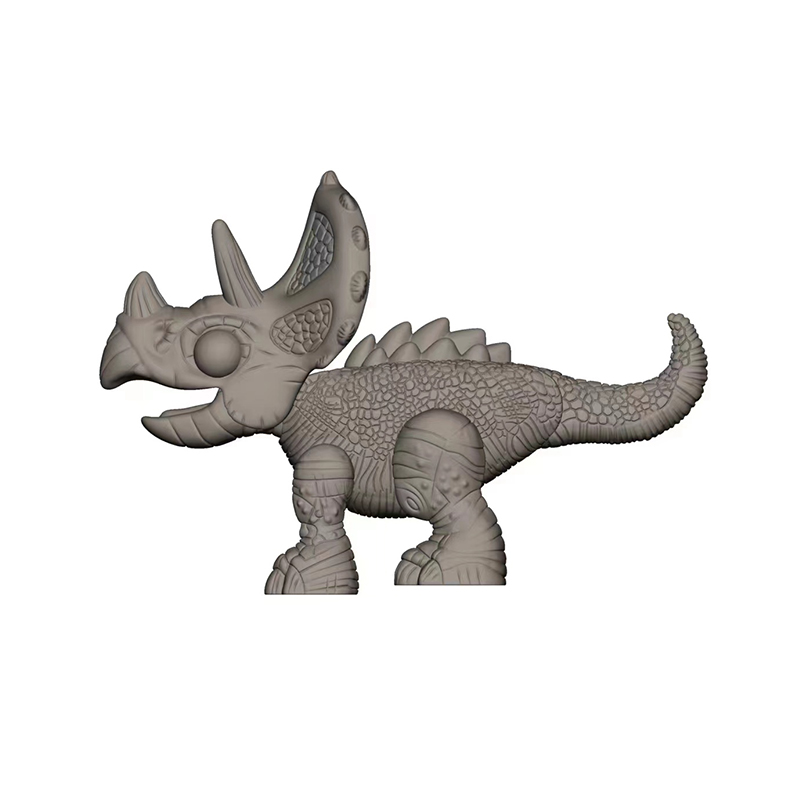The Plastic Thin Space Cup Mould represents an innovation in the manufacturing o...
-

+86-15068654601
-

No.62 Zhao Feng Road, Huangyan, Taizhou, Zhejiang, China

+86-15068654601

No.62 Zhao Feng Road, Huangyan, Taizhou, Zhejiang, China
The production of plastic dinosaur toys is a specialized segment within the broader toy manufacturing industry. These toys, popular among children and collectors alike, require a combination of aesthetic appeal, safety, and durability. Central to producing high-quality plastic dinosaur toys is the design of the plastic dinosaur toy injection mould, a tool that shapes molten plastic into detailed, consistent, and safe final products.

For plastic dinosaur toys, the mould must capture intricate details such as skin textures, facial features, claws, and body contours. Additionally, it should facilitate easy demolding, maintain product consistency, and meet safety standards.
The mould cavity is the hollow space that shapes the molten plastic into the dinosaur toy. Since dinosaur toys often feature complex shapes and textures, the cavity design must be precise and highly detailed.
Advanced computer-aided design (CAD) software allows engineers to model every feature of the toy, including scales, eyes, and limbs. This digital design is then used to create the mould cavity, ensuring the final product has lifelike details that appeal to consumers.
Depending on production volume and efficiency goals, mould designers may choose between single-cavity and multi-cavity moulds. Single-cavity moulds produce one toy per injection cycle, while multi-cavity moulds create multiple identical toys simultaneously.
For mass production, multi-cavity moulds are preferred as they significantly increase output and reduce unit costs. However, multi-cavity moulds are more complex and expensive to design and manufacture, requiring careful balancing to ensure all cavities fill evenly and produce consistent quality.
The mould design must account for the type of plastic used in the toy. Common plastics for dinosaur toys include polyethylene (PE), polypropylene (PP), and acrylonitrile butadiene styrene (ABS). Each material has distinct flow properties, melting points, and cooling behaviors, all of which influence mould design.
For instance, materials with higher viscosity require larger or more strategically placed gates (the entry points for molten plastic) to ensure the cavity fills completely. Cooling channel placement must also be optimized to account for material-specific cooling rates.
The gate is the passage through which molten plastic enters the mould cavity, and the runner system is the channel network that delivers the plastic to each cavity. For plastic dinosaur toys, careful design of gates and runners is critical to minimize defects such as air traps, incomplete filling, or excessive flash (excess plastic around edges).
A well-designed runner system ensures balanced flow to each cavity (in multi-cavity moulds) and efficient material usage, reducing waste and production costs.
Once the plastic solidifies, the toy must be removed from the mould without damage. The design of the ejection system—including ejector pins, sleeves, or plates—must be tailored to the toy's shape and fragility.
For delicate features like claws or tails, the ejection system should apply uniform force and avoid deformation. Sometimes, side actions or lifters are incorporated to release undercuts or complex geometries safely.
Injection moulds for dinosaur toys must endure repeated use under high pressure and temperature. Steel moulds are generally preferred for their durability, while aluminum moulds may be used for prototypes or short production runs due to lower cost and faster machining.
Regular maintenance, including cleaning, lubrication, and inspection, ensures the mould remains in good condition, preventing defects and prolonging its service life.
Since dinosaur toys are intended for children, mould design must consider safety regulations. This includes avoiding sharp edges, small detachable parts, or features that could cause injury. The mould design should produce toys that comply with relevant safety standards, such as ASTM F963 or EN71, depending on the market.